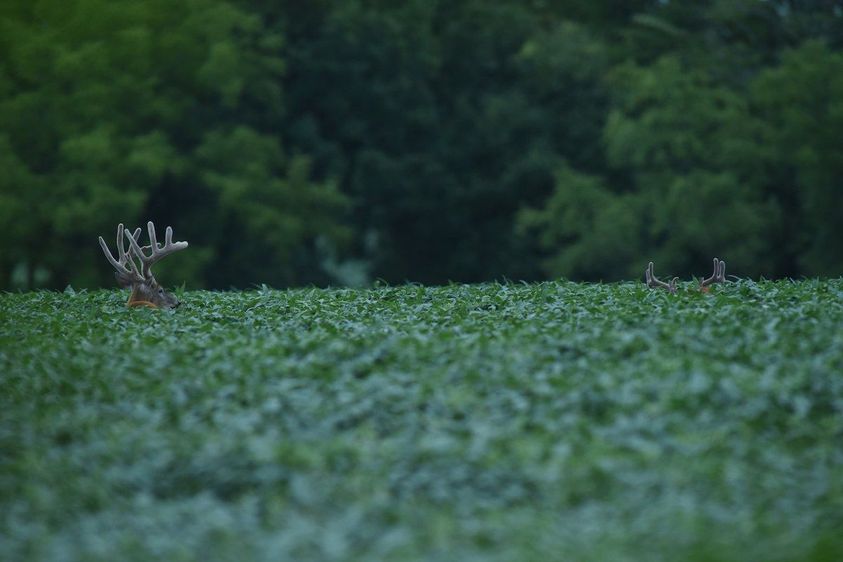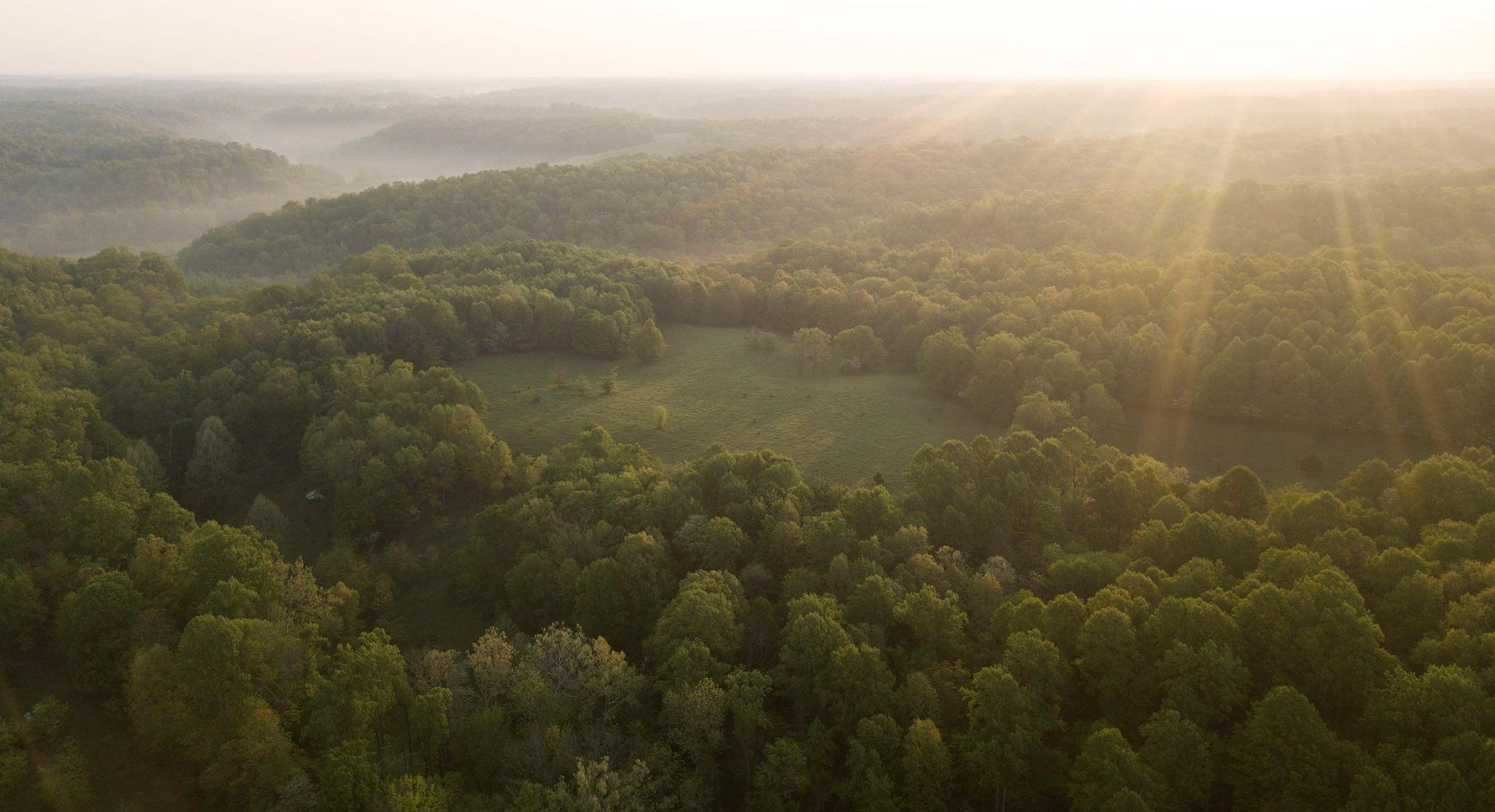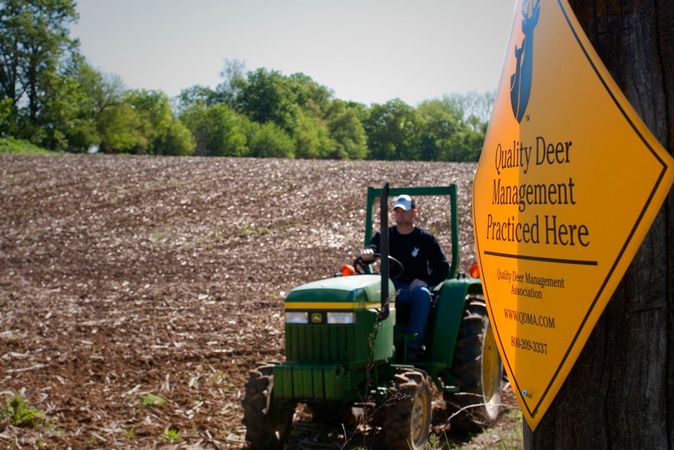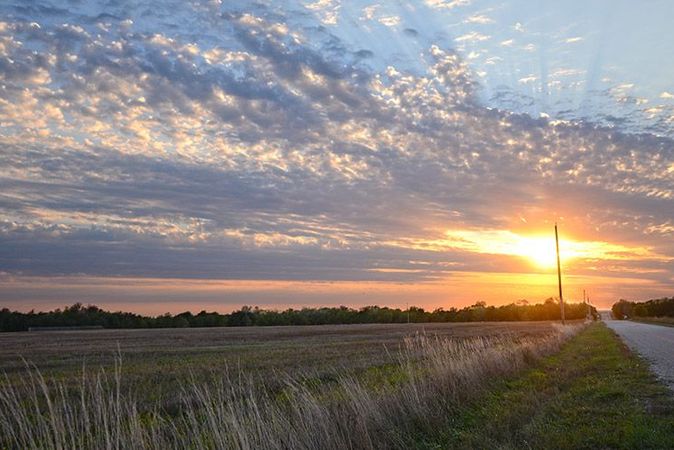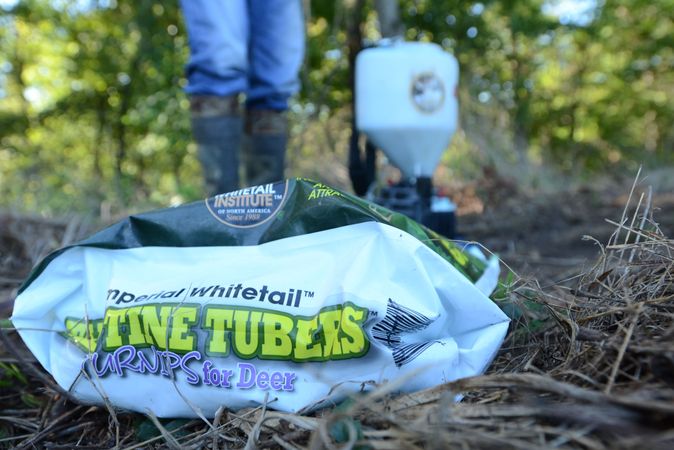Headlines touting one deer forage type over another are plentiful. You may have seen flashy hooks like “The Best 5 Food Plots to Plant” or “The Only Food Plot You Need to Plant.” It’s saucy, and the appetite for that one, single thing that can blow the doors off your hunting season is ever-present. But look away.
Don’t overthink crop selection. Not now, not this fall, not ever.
This is one of the key takeaways in an article published by Quality Deer Management Association (QDMA) that details five principles of food plot management. The principles are written by Dr. Craig Harper, professor of wildlife management at the University of Tennessee.
Maybe your food plots are planted, or maybe you’re in a colder planting zone and you plan to plant your property in the coming weeks. Regardless of where you’re at in the process, it’s important to keep two things in mind:
- What you plant matters less. Nearly all plants commonly used in whitetail food plots are equally effective as nutrient-rich forage for deer.
- Tonnage, timing and distribution matter more. Each feature of your property should complement the next, all serving one overarching goal. To get it right, tonnage, timing and distribution are critical.
“Do not worry about what other people are planting,” Harper writes in the QDMA article. “Instead, think about why you are planting, consider which plants you need in your area and situation to meet your objective, and then use sound agricultural practices that will promote healthy plants that can grow to their full potential.”
Food-Plot Foraging and the Nutritional Requirements of Deer

According to Harper, just about everything commonly planted and promoted for food plots exceeds nutritional requirements for deer. Most of these plants, featured during spring and summer, have protein levels exceeding 20 percent, phosphorus levels exceeding 0.3 percent, calcium levels exceeding 0.5 percent and include all other required minerals and vitamins. All are in sufficient amounts to support lactating does, growing fawns and maximum antler growth.
Regardless of what you choose to plant, recognize your food plots for what they are: a supplement to naturally-occurring forages. Studies suggest wild forbs and browse serve as the backbone of a deer’s nutrition, and they’ll continue to rely on these food sources in spite of what you do or do not plant.
This can be attributed to three factors:
- Deer are concentrate selectors.
- Deer spend most of each day in relatively thick cover.
- Naturally-occurring forages offer minerals and vitamins not always available in food-plot forages.
The designation of “concentrate selector” means an animal concentrates on select plants and select parts of plants. So deer are browsing continuously to find what they’re looking for, eating as they go along. And since they spend most of their time in dense cover, they’re not eating exclusively from food plots.
“If forage is available within protective cover, they would rather eat there instead of standing in the open and grazing in one area over a relatively long period of time like cattle,” Harper writes. “And if they feed in open areas, they do so relatively quickly before returning to cover.”
When considering a property holistically, it’s not only about the food plots and what’s in the food plots. It’s also about knowing which wild plants have value (as it relates to deer foraging) and which do not. Once you have an understanding of what’s what, you can distribute food plots across the property strategically. Pick your spots by factoring in what’s occurring naturally and where those wild forages are located.
“(C)onsider naturally-occurring forage as the nutritional baseline for your hunting land,” writes Harper. “If the baseline is high, then your food plots can help boost weights and antler size a little higher. If the baseline is low, food plots can provide an important source of nutrition, but average weights and antler size per age class are almost never up to what they would be if there was an abundance of high-quality natural forage.”
Granted, there are exceptions. Say your property is dominated by large fields of agricultural crops. In that case, the food volume is tremendous, as is the distribution. A scenario like this one or similar can render natural forage as a less critical factor.
Timing is Everything, But Not in the Way You Might Expect

Too often, we view our property in blocks. Each feature is considered a separate entity independent of other land features. For many of us, at least intellectually, this isn’t true. We get it. But when it comes to putting a holistic view into practice, season after season, things can change. Your focus inevitably shifts to the details and the tasks you’ve listed to improve the property. Soon enough, you’re in a tactical frame-of-mind. And when this happens, our focus creeps away from larger goals.
Part of keeping your eyes trained on strategy is being aware of timing and the importance of timing in nature. And, sure, timing is important as it relates to each season: plant selection should ensure crops are successional and foraging opportunities are abundant throughout the year. But there’s also the critical timing of other factors, like plant maturity.
Plant Maturity: Don’t Quit on a Crop Before the Deer Do
“(W)hat is less understood by many people is how the age of a plant strongly affects nutrient availability within that plant, and how nutrient availability does not necessarily dictate deer selectivity,” writes Harper.
According to Harper, cell walls and other structural components grow larger as the plant matures. Structural carbohydrates, especially lignin, are relatively indigestible to deer and apparently much less palatable because deer strongly prefer relatively young plant material. The increase in structural components and a corresponding decrease in digestibility is more prevalent in some plants than others.
Consider Alfalfa. As the plant matures, the stems can get hard and woody. But that doesn’t mean the plant doesn’t continue to provide digestible nutrients through its leaf production. Alfalfa will leaf out until it flowers and produces seed. So as long as the plant is producing leaves, the deer are getting what’s needed and a food plot featuring Alfalfa or plants with similar life cycles will successfully attract consistent usage.
Understanding how a plant progresses through its life cycle and how deer respond will inform when to mow a food plot or when to replace it. And that’s not to say a food plot should not be mowed, as Harper notes in his paper. Rather, it’s about timing.
“I typically recommend mowing perennial forage food plots once per year, usually in late summer after the forages have flowered and produced seed,” says Harper. As for annual food plots, “there is no need,” he says. “Annual forages continue to produce fresh, new forage until they flower and die.”
Seasonal Transitions: Don’t Preempt Peak Tonnage
Food plots can provide critical nutrition for deer in August and September as your naturally-occurring nutritional baseline is declining, if you allow late summer plots to peak in tonnage. Photo: Silly Putty Visuals
Let plants and food plots do their thing, without untimely intrusion. Preempting a plant’s life cycle by mowing it down before its value is truly gone is one temptation. Poorly managing the transition from warm-season crops to cool-season crops is another.
Imagine it’s late summer. Harper uses soybeans and cowpeas to illustrate what often happens in this failed scenario. These two crops have peaked in tonnage, and deer are hitting the food plots regularly. Specifically, a typical food plot featuring soybeans and cowpeas may contain 4,000 pounds (dry weight) of highly digestible forage per acre in late August and early September.
At the same time — remember it's late summer and other vegetation is waning at best — your property’s naturally-occurring nutritional baseline is declining. So this could be a shining moment for your food plots. It’s when they can really matter.
“Your warm-season plots are providing a tremendous source of energy as does are drawn down from lactation and bucks are putting on fat in preparation for fall and the stresses of the rut,” says Harper.
But a lot of hunters are in an entirely different headspace. And that’s understandable. You’re seeing fall. It’s coming fast, and you’re trying to get food plots in for hunting. So what happens? You remove food the deer are using and replace it with something they can’t use.
“If you are tempted to clear your warm-season food plots to plant a cool-season plot to hunt over in the coming months, it’s time to evaluate your objectives,” says Harper.
While you’ll need a green plot to hunt over in the fall and winter, you’re also probably looking to keep deer on your property in the meantime. As such, if you’ve got the acreage to do it, let your warm-season plots stand. Give the deer the time they need to take advantage of the highly digestible forage that’s at its peak.
As for your cool-season plots, plant them elsewhere.
Double-Dipping With No-Till
May you’re thinking, “wait just a minute.” Because you don’t have that much acreage. You don’t have the luxury to dedicate separate acreage to warm- and cool-season crops. If this is your situation, you’re in the company of many. And there are work-arounds.
Try planting cool-season forages alongside your warm-season plants using no-till drill or no-till, top sow practices. With drilling, you’ll want to start when the warm-season crops are declining, usually around the first frost. If you choose to top-sow, you can start before your warm-season food plots begin to decline.
Harper says this allows the seed to settle and germinate as soon as the warm-season plot begins to die. Of course this works conversely too, as you transition from cool-season crops back into warm-season food plots in the spring.
These planting methods, along with the other tips and tactics for managing food plots, each point back to the larger strategy of timing and distribution. If we consider the big picture, food-plot management is really about manipulating the various factors of timing. Understanding the selectivity and timing of deer paired with the timing of its habitat — the seasons, crop cycles and individual plant maturity — work together to inform a larger strategy for your hunting property.
Quality Deer Management Association (QDMA), the leading whitetail organization dedicated to conserving North America's favorite game animal, publishes "Quality Whitetails," which featured the article, Five Principles of Food Plot Management. Dr. Craig Harper has published several books on food plot management. Learn more about Harper and his research or read his paper outlining the five principles of food-plot management.


